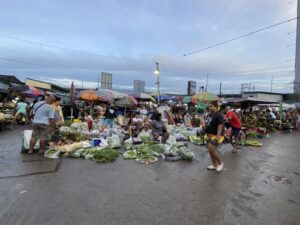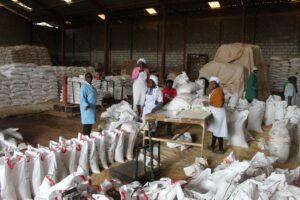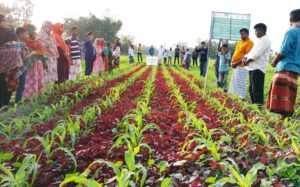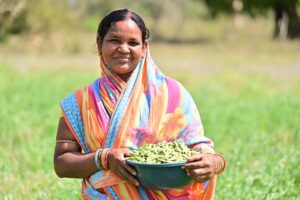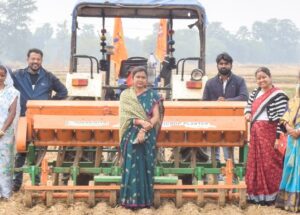
The United States Agency for International Development (USAID) believes that meeting three fundamental needs of developing nations — ensuring food security, facilitating long-term economic growth, and improving the lot of the rural and urban poor — requires the best that science can offer. We must apply agricultural science to maintain current levels of agricultural productivity in the face of worsening biological and natural resource challenges and, additionally, increase productivity where possible to keep pace with expanding food demand and to stimulate agricultural and economic growth. Both goals rely heavily on advances in science and technology based on research.
Agricultural research takes many forms, ranging from cutting-edge science in advanced institutes to structured variety trials across a wide range of environments — and even simple trial and error by individual farmers. USAID increasingly emphasizes partnerships with a wide range of public organizations, facilitating public-private research collaboration and the participation of nongovernmental organizations, to produce knowledge-based public goods of benefi t nationally and, more importantly as knowledge spills over borders, regionally or even globally. IRRI occupies the crossroads of this dynamic international process.
New opportunities
Research frontiers such as biotechnology provide exciting new opportunities, making possible agricultural breakthroughs and speeding the development of other useful technologies. USAID’s new Collaborative Agricultural Biotechnology Initiative (CABIO) facilitates increased support for technological innovation while ensuring safety for consumers and the environment.
Two global CABIO projects — the Agricultural Biotechnology Support Project at Cornell University and the Program in Biosafety Systems — use partnerships with IRRI, its sister centers in the Consultative Group on International Agricultural Research (CGIAR), and national agricultural research systems. CABIO also has regional projects in Africa and national activities there and in other regions.
Although USAID is largely a bilateral organization, we also pursue partnerships with other bilateral donors and international organizations. The CGIAR is a prominent example. Our Bureau for Economic Growth, Agriculture and Trade (EGAT) supports international research programs involving U.S. universities and developing-country institutions through, for example, the Collaborative Research Support Program. USAID funds an array of regional collaborative research networks in Africa, some involving CGIAR centers. Our country missions in 79 countries around the world conduct a range of development programs that build on an array of existing foundations, including the CGIAR and CABIO.
USAID has long viewed IRRI as a cornerstone of the CGIAR because of its enormous contributions to global food security, especially in Asia. USAID started providing core (unrestricted) funding to IRRI in 1970, before the CGIAR was established. This support, handled centrally through EGAT, has continued, reaching a cumulative total of nearly $124 million in 2002. Beginning even earlier in 1967, other sections of USAID in Washington and numerous country missions have provided additional restricted funding, focused on specific countries or research targets, totaling more than $38 million by 2002.
Overall USAID support for IRRI to date thus exceeds $162 million. We see a strong continuing need for IRRI’s leadership in advancing scientifi c research and applying discoveries to field-level
problems.
Global benefits
IRRI’s current research goals are both demanding and highly promising. Some, like drought-tolerant rice varieties, could greatly help some of the world’s poorest farmers. Intensive aerobic(dry field) rice systems may offer global environmental benefi ts by saving water and fuel. Nutrient-rich high-iron and Golden Rice promise improved health for hundreds of millions of people. IRRI’s partnerships with advanced research institutions around the world further the new science of functional genomics, unlocking the enormous genetic diversity of cereal crops to find new solutions for poor farm families.
Central as it may be to improving productivity and nutritional quality, research is not the whole story. Maximizing its impact on agricultural communities and economic development requires complementary action. USAID’s new agricultural strategy therefore focuses on three related areas: (1) expanding domestic and international trade opportunities and the ability of farmers and rural industries to respond to them, (2) promoting sustainable agriculture and improved management of natural resources, and (3) bridging the knowledge gap through training and education, outreach, and adaptive research.
In any effort to provide public goods, needs greatly exceed means, at the global level and especially in the poorest nations. CGIAR centers such as IRRI play a major role in ensuring that the global research system makes the most of available financial and human resources.


